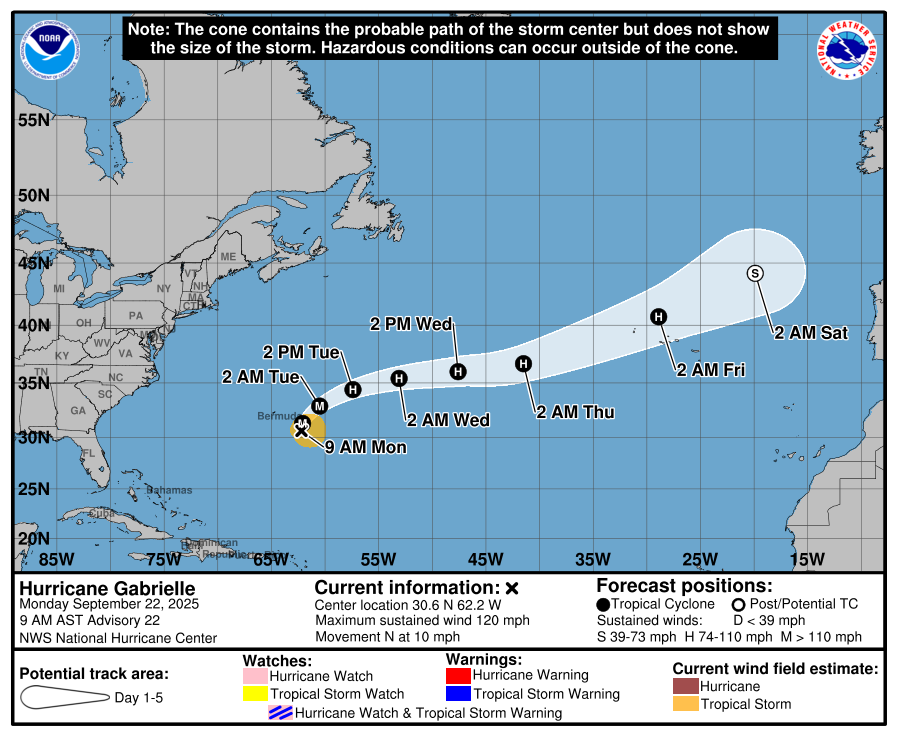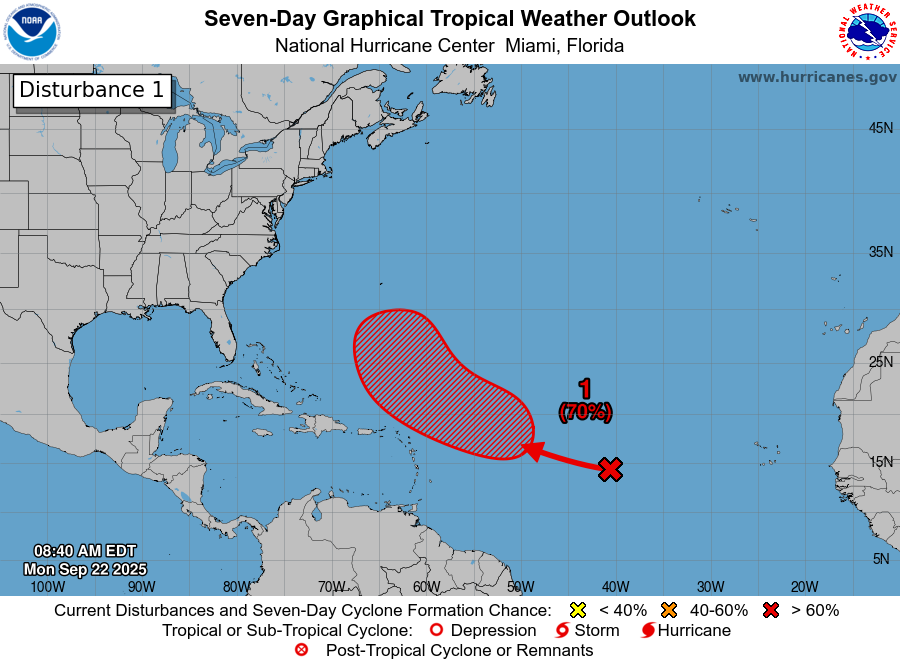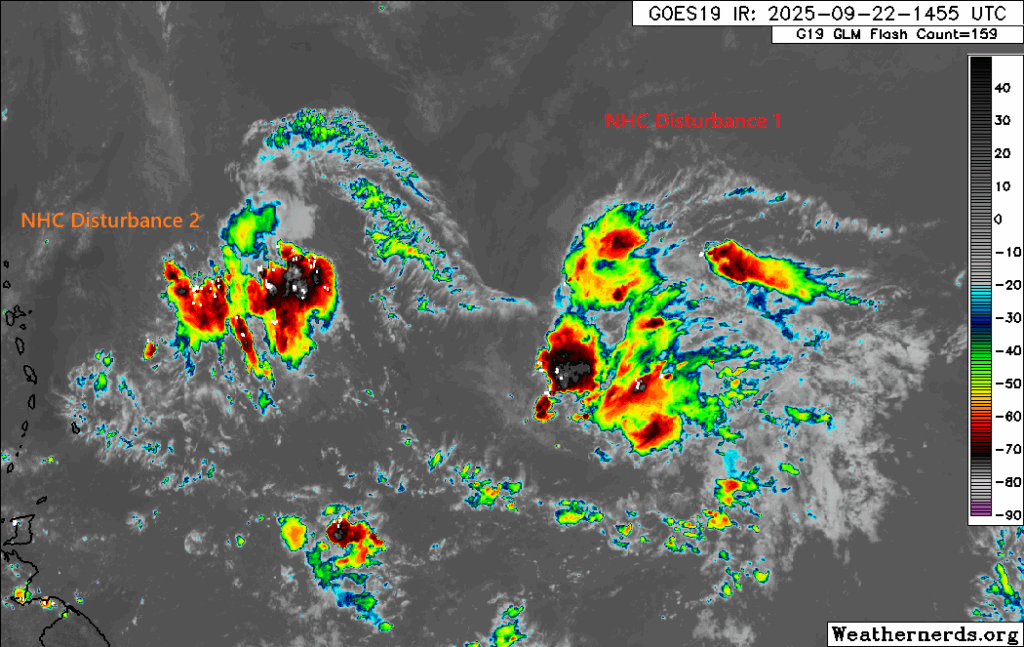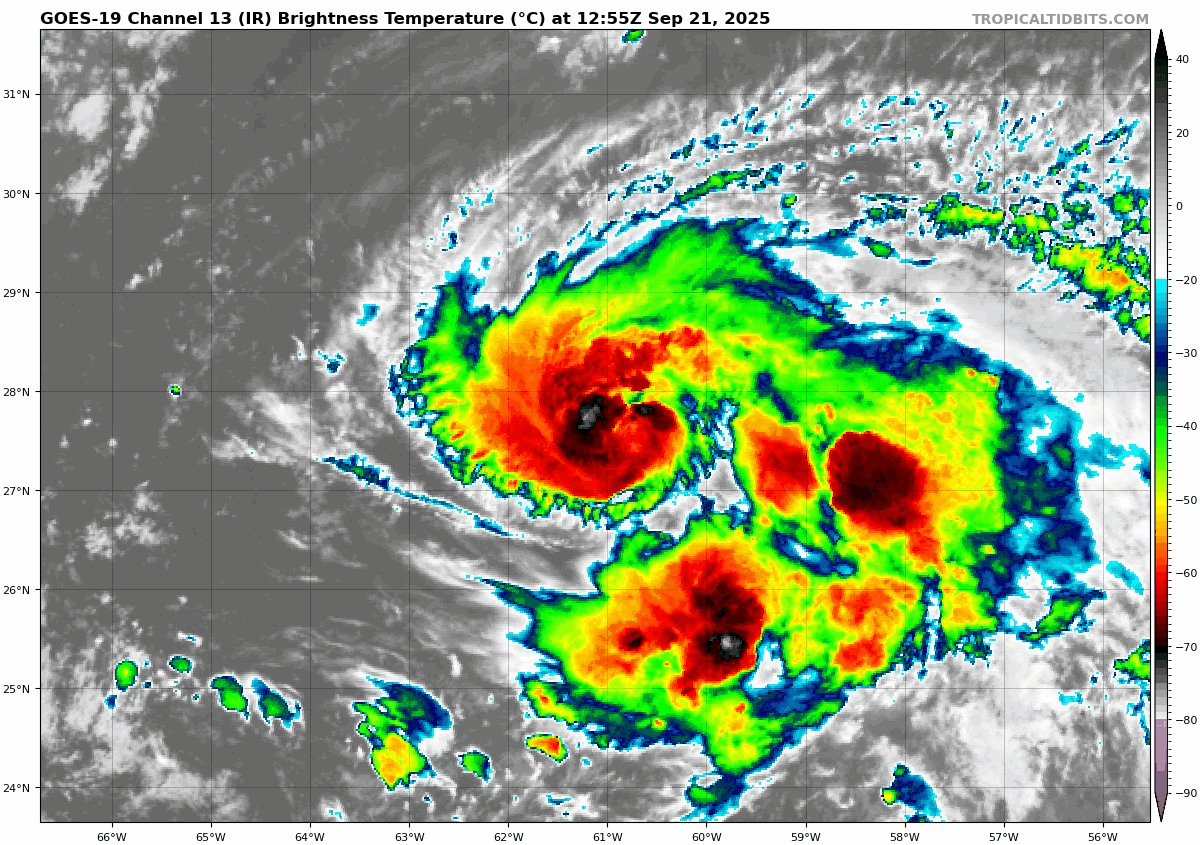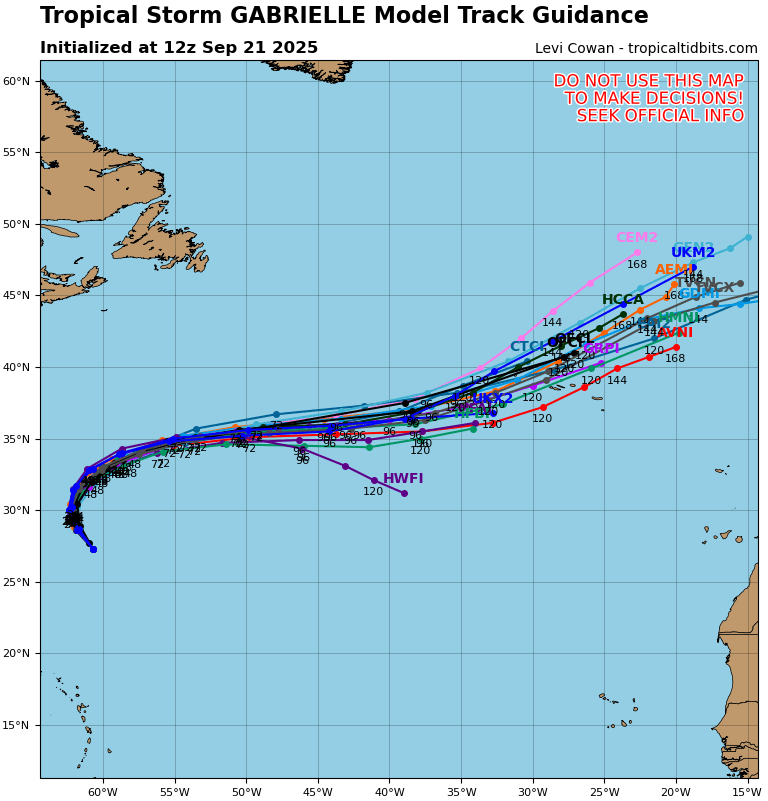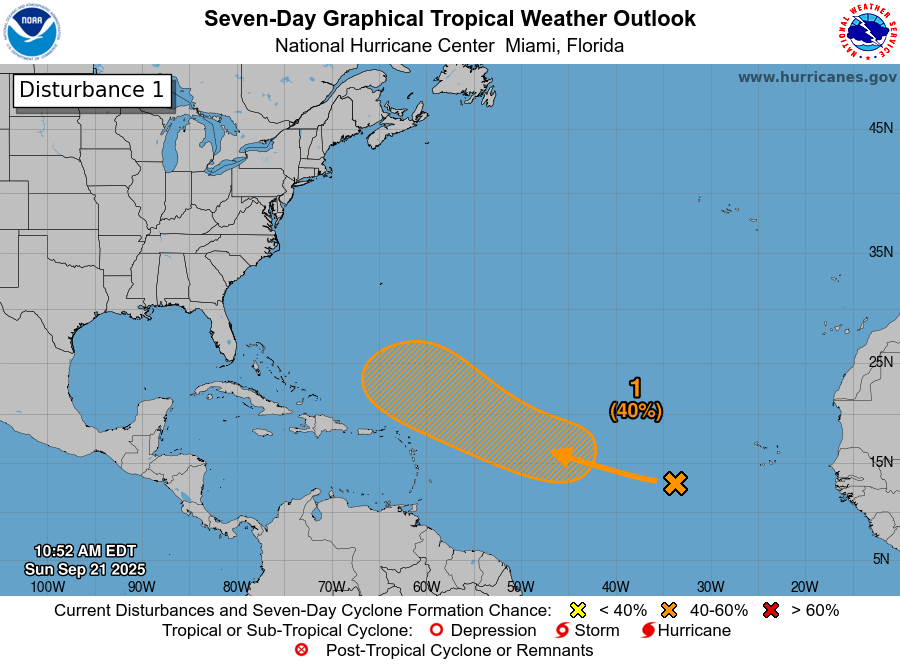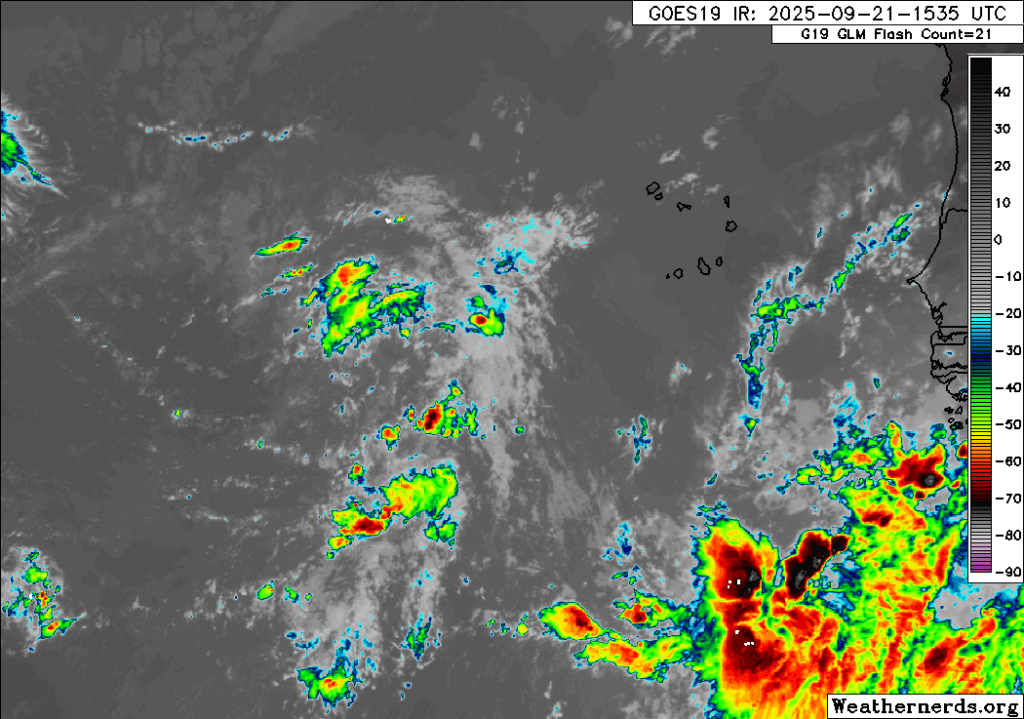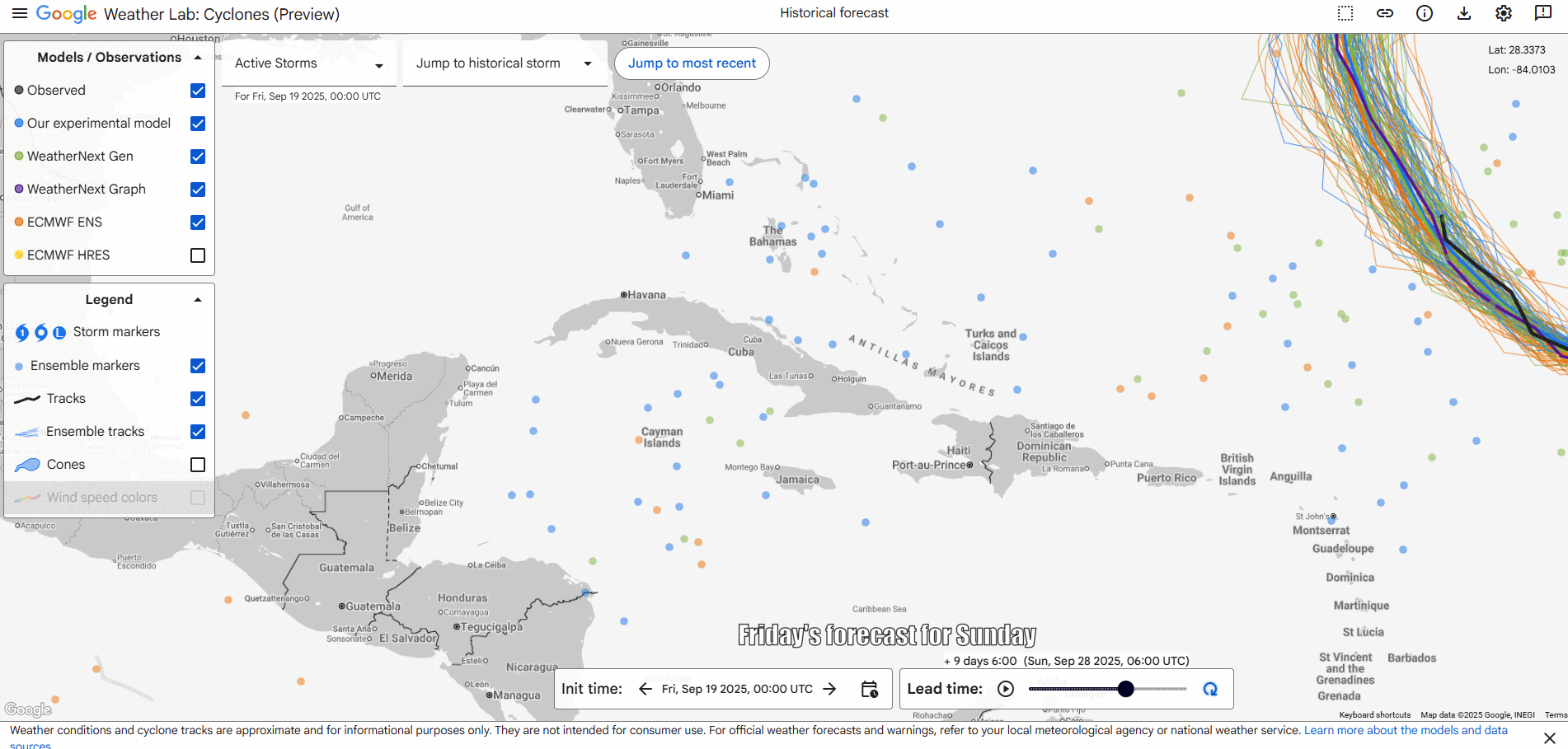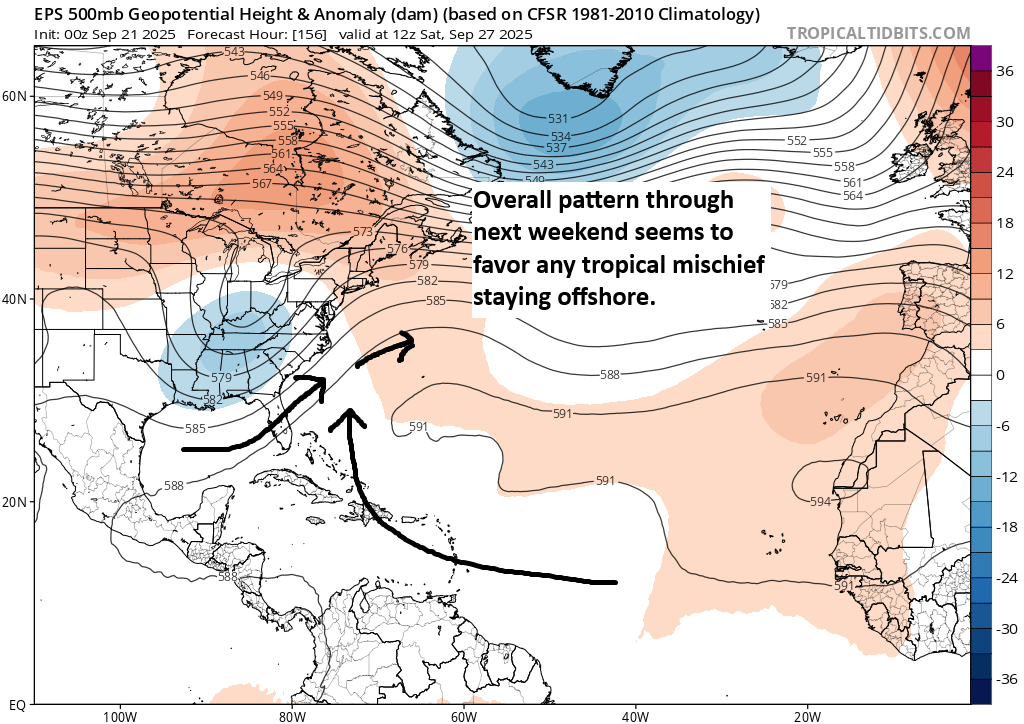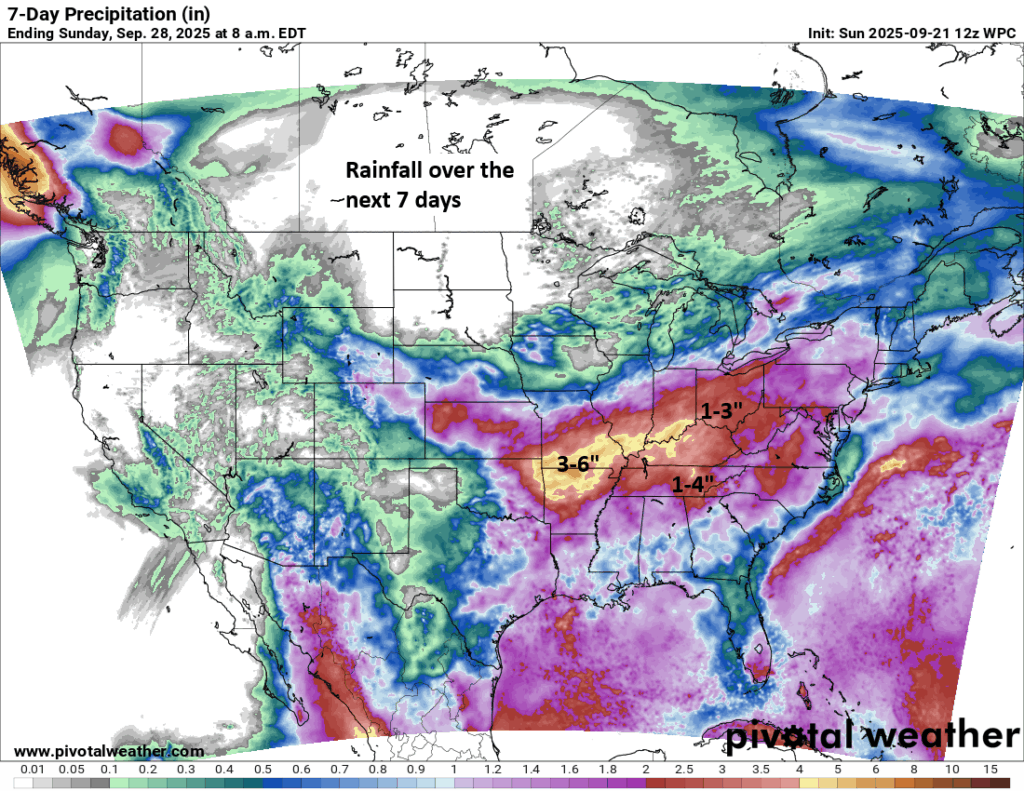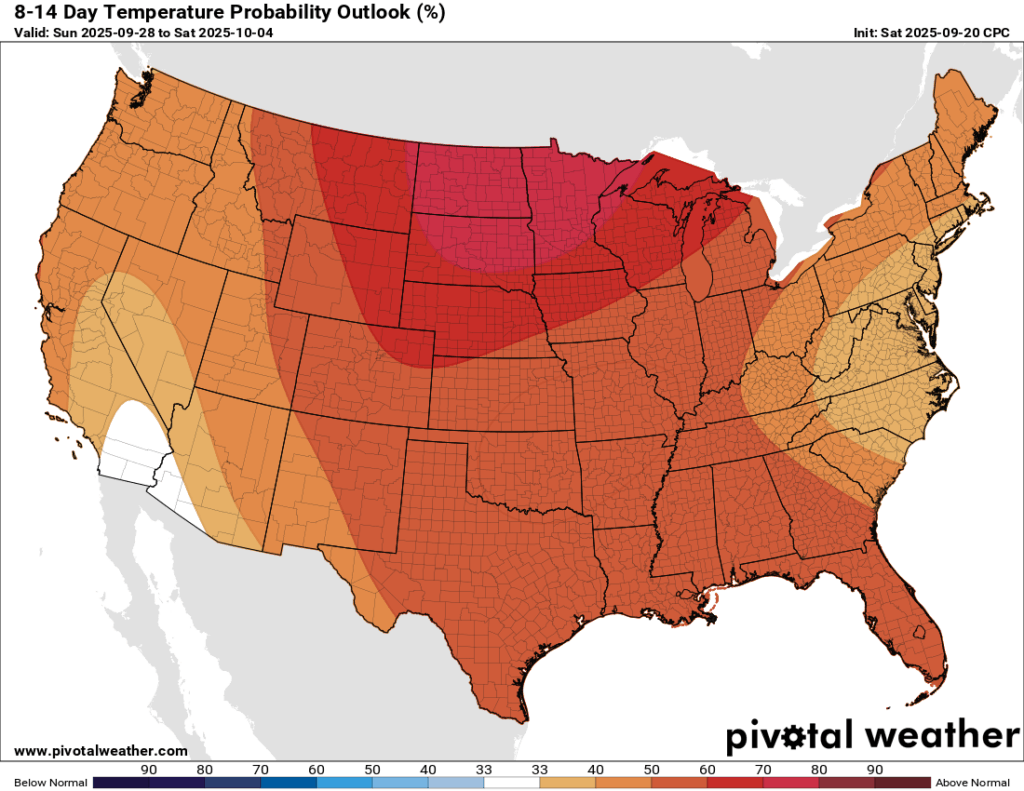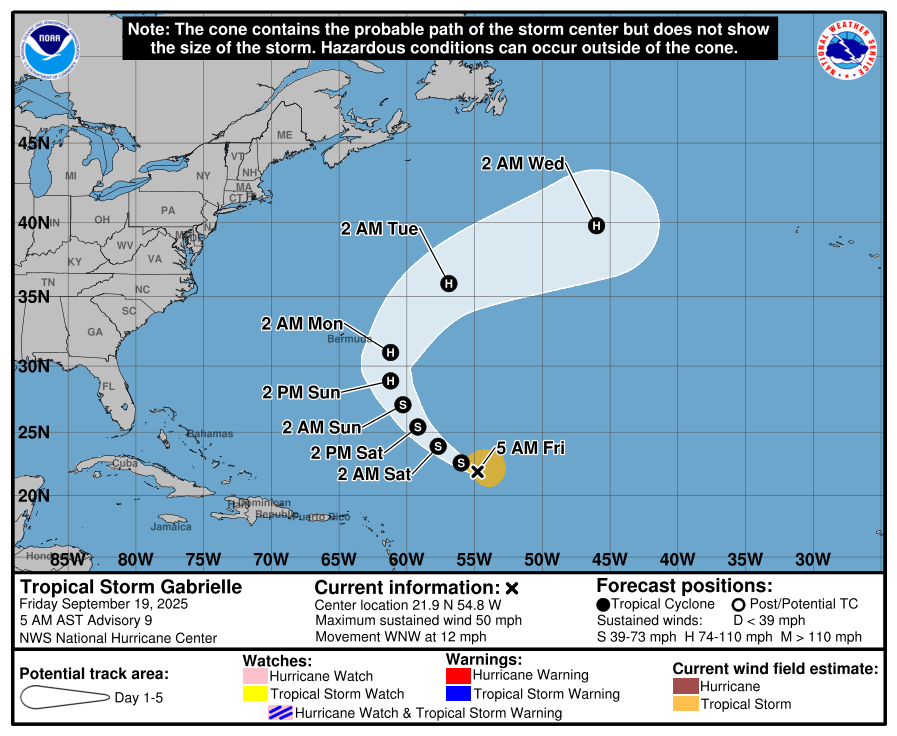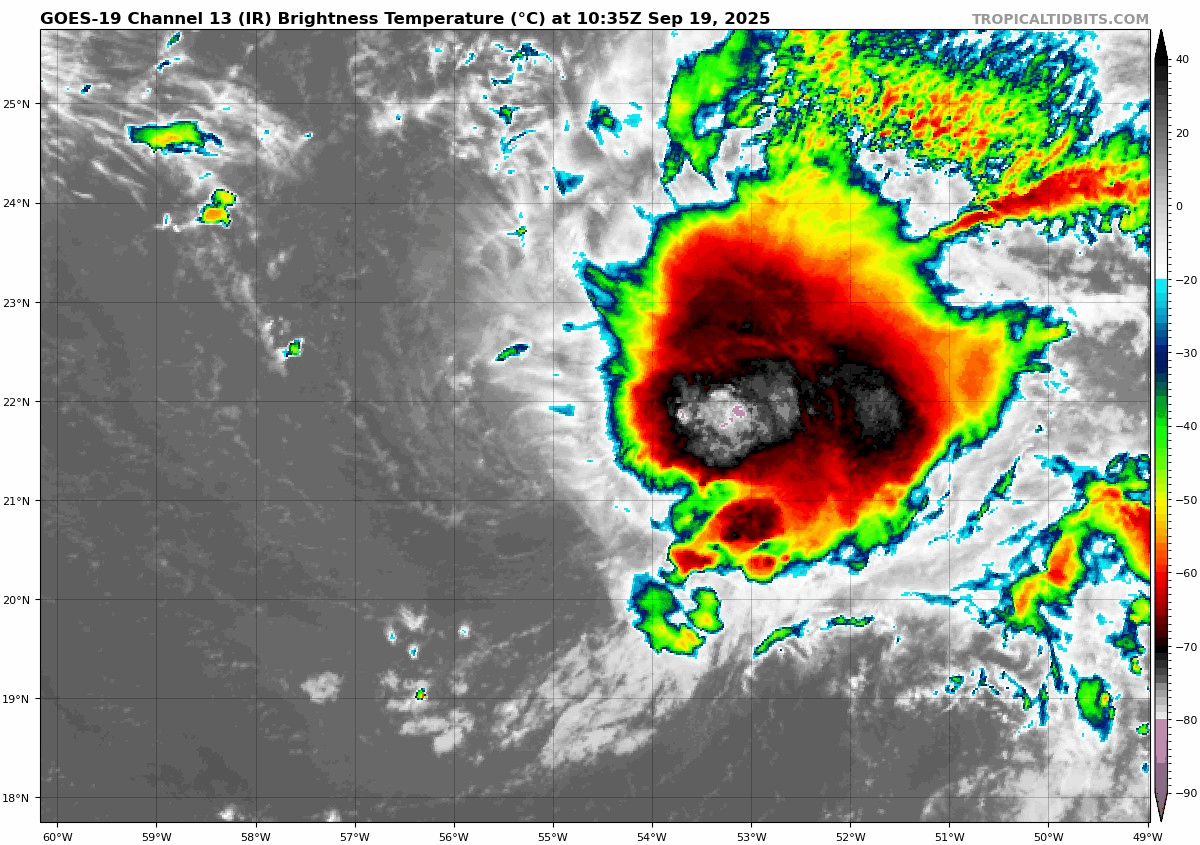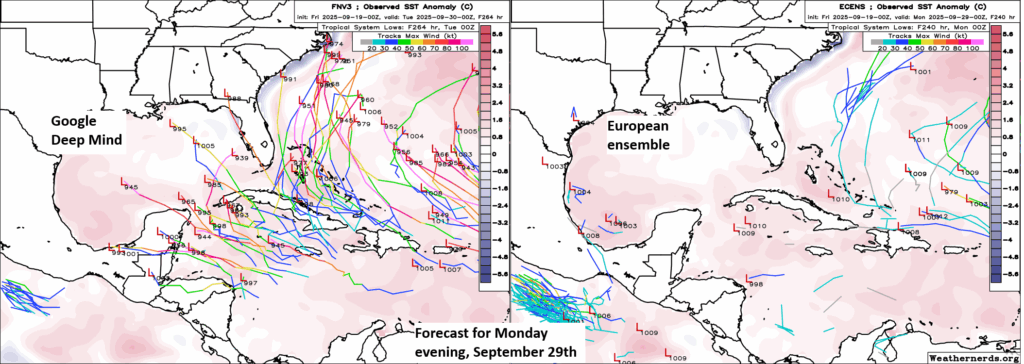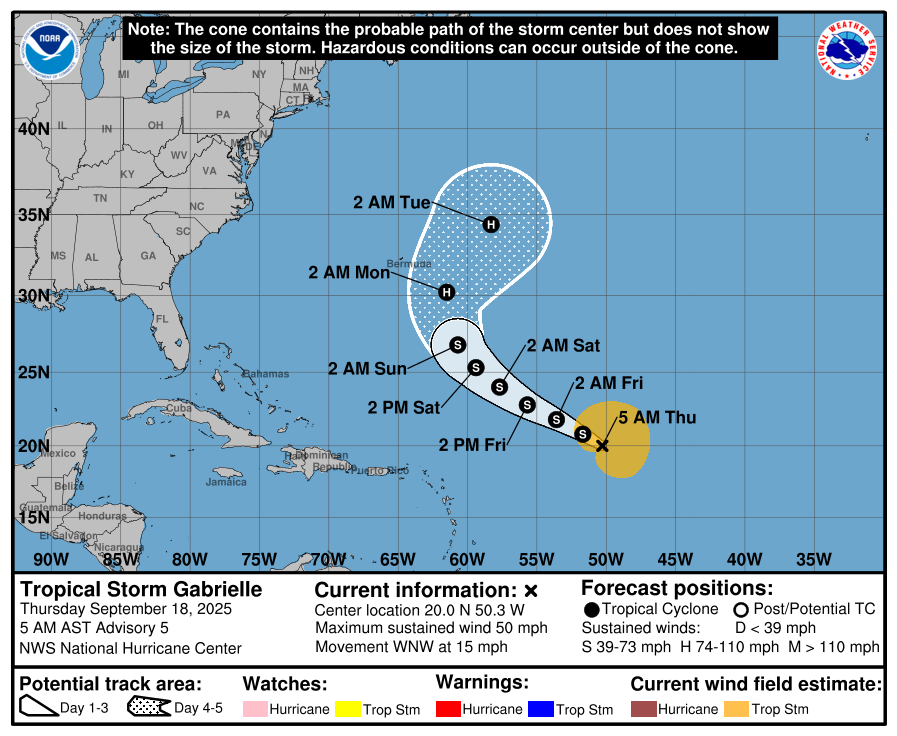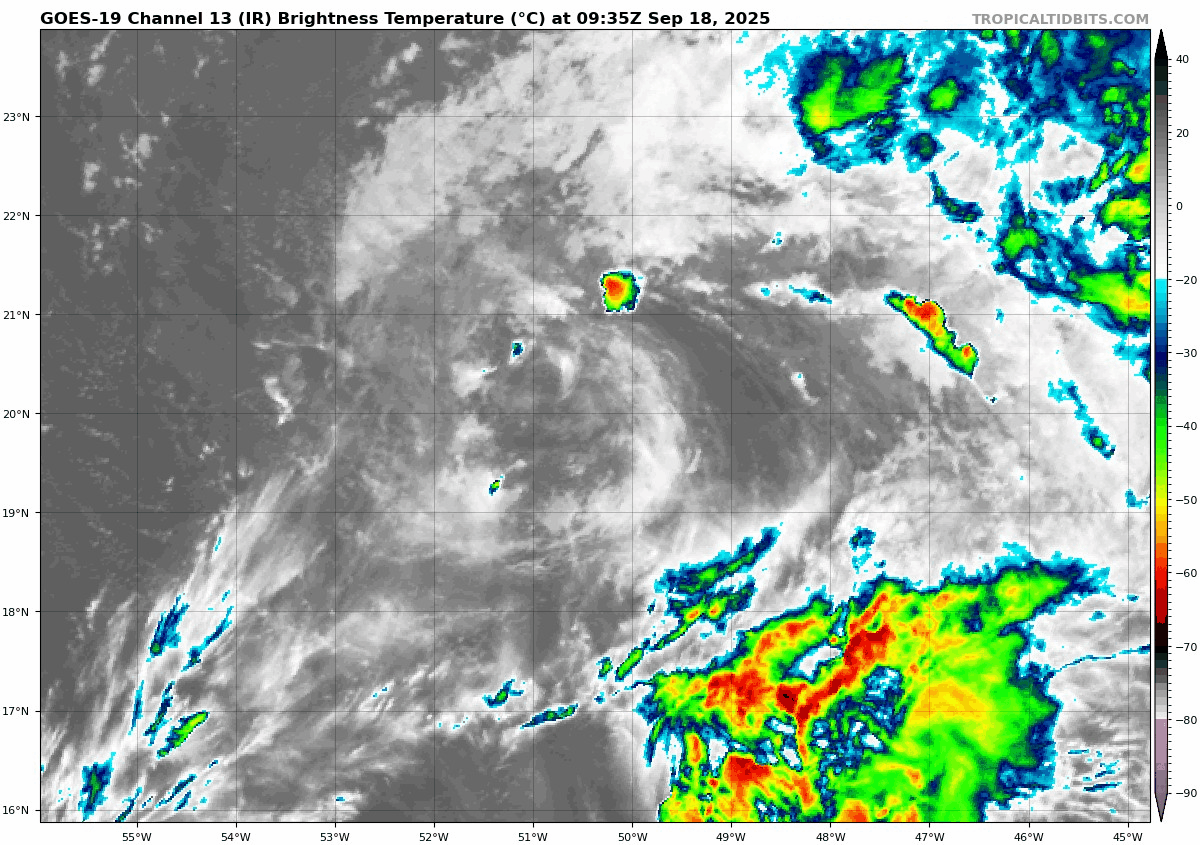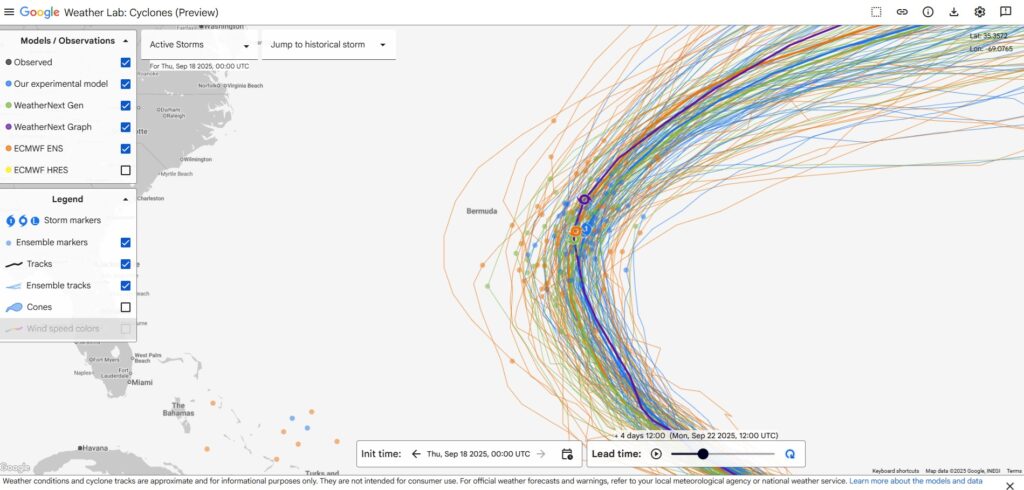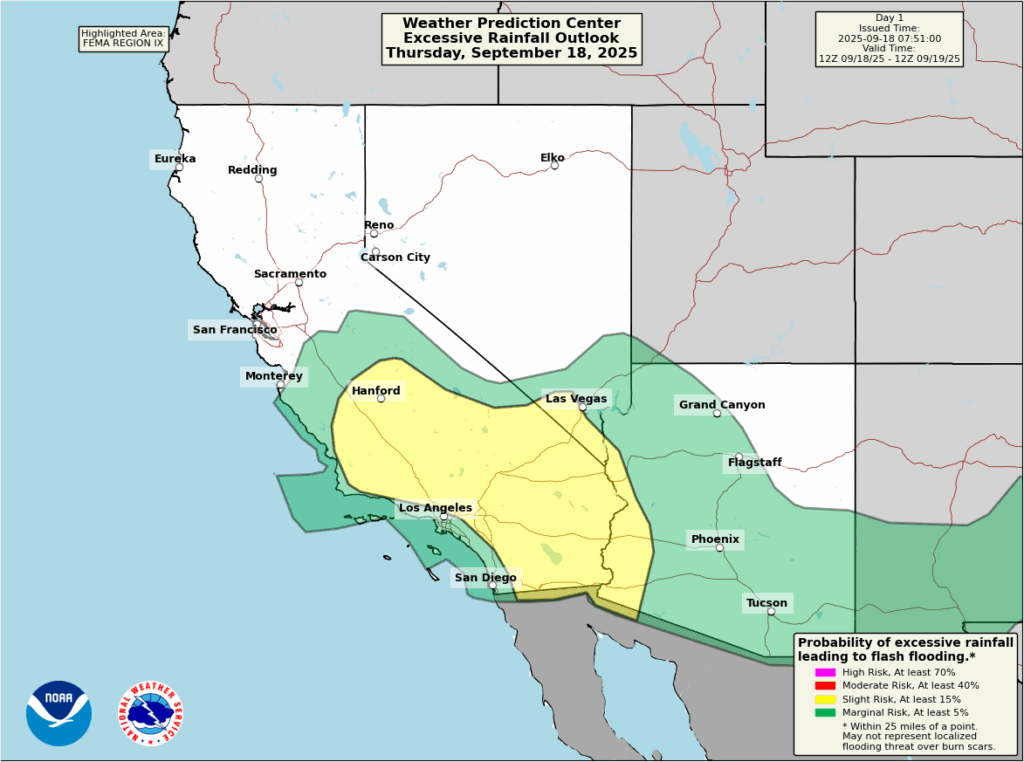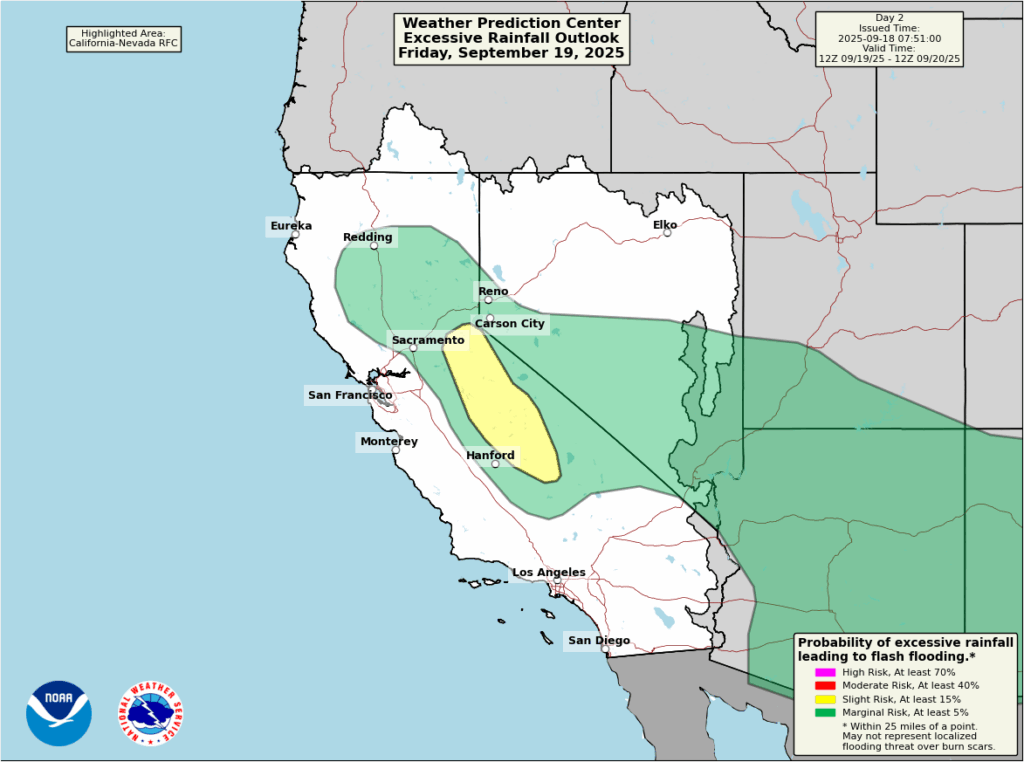In brief: Gabrielle became a hurricane and then a major hurricane overnight and this morning. It should head out to sea now, but it may bring some impacts to the Azores or even Europe eventually. Disturbance 1 from the NHC carries a 70% chance of development and is currently not a serious land threat. Disturbance 2 from the NHC carries a 40% chance of development and has a high degree of uncertainty in its forecast heading toward the weekend. We explain it all below.
Things have escalated a bit in the tropics, but there are still more questions than answers in some cases. Let’s walk through the development areas and explain what we know in each case.
Major Hurricane Gabrielle
Last week we were scoffing at how paltry Gabrielle looked. But we said despite that it had a chance to become a hurricane, if not a major hurricane by Sunday or Monday. Well, here we are, and we got our major hurricane. Gabrielle has maximum sustained winds of 120 mph this morning, and it looks spectacular.
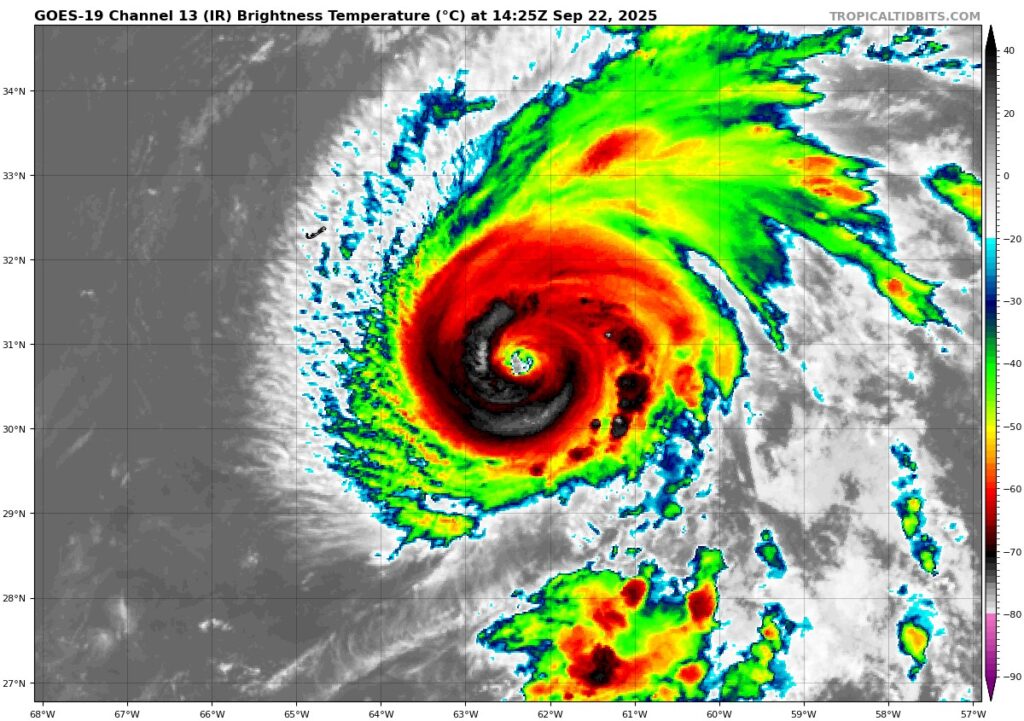
Gabrielle is in a bit of a precarious position, as it moves over much warmer than normal water. The water will be gradually cooling, however as it moves north and northeast. Still, Gabrielle has a good 24 hours in a favorable environment, and we could see it take a quick run at category 4 intensity this afternoon before peaking. From here, Gabrielle strolls out to sea and slowly weakens.
That said, Gabrielle probably won’t fizzle out. Impacts from Gabrielle are possible in the Azores by Friday and perhaps even in Iberia by Sunday or Monday. Exactly what those impacts will be are TBD. Uncertainty in the forecast from the Azores to Europe increases with time in Gabrielle’s forecast.
70% chance of development area
I want to preface this by saying that there are two distinct disturbances in the Atlantic, and the models are still sorting things out with each one. For now, I’m going to focus on the Central Atlantic one discussed here as the most likely to develop and also farthest east. A tropical wave in the central Atlantic is carrying a 70 percent chance of development over the next week as it comes west and northwest.
This system will be interesting, though I’m not particularly concerned about it making landfall right now. That said, it bears some watching. We’re still several days away from it getting north of the islands and south of Bermuda. But when it gets to that area, the upper level pattern is supportive of a system that moves slowly, possibly even stalling out. High pressure will block its exit east, at least initially, and a trough over the Southeast will sort of inhibit westward movement.
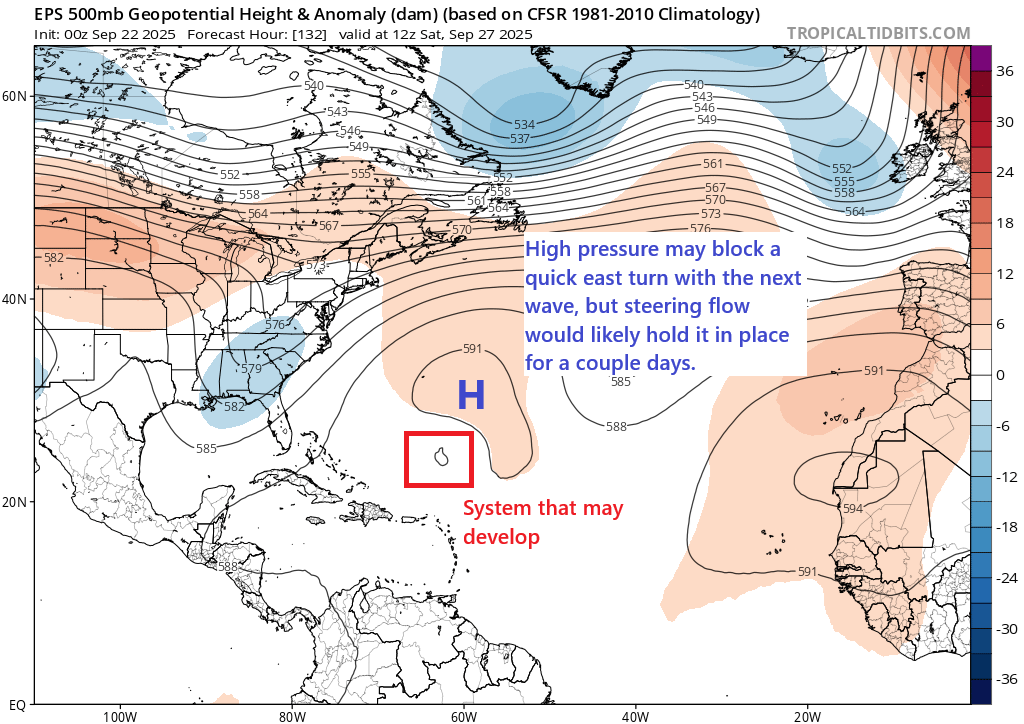
On the one hand, the high is expected to eventually weaken enough to allow for an exit out to sea, possibly by Tuesday or Wednesday of next week. On the other hand, systems that stall out inherently have high uncertainty and bear watching. If one of the puzzle pieces currently in place in the forecast ends up shifting, the overall outcome could also shift. For now, I would say continue to monitor this system, but it’s probably not worth losing sleep over at this very moment.
40% chance of development area
And then ahead of the above discussed area, we have another area to watch. This one is carrying a 40 percent chance of development over the next week.
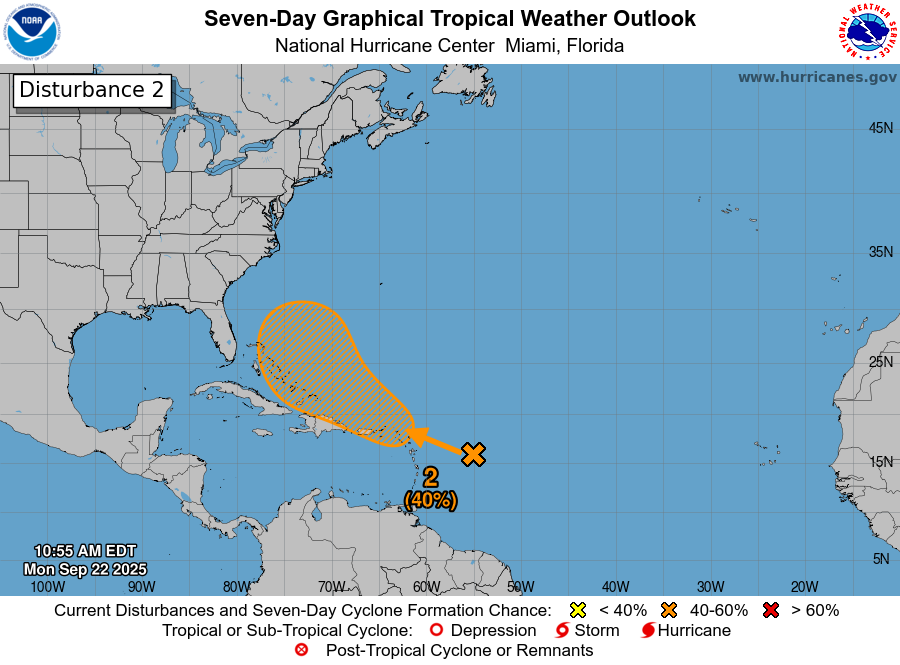
Looking on satellite, both the previously discussed disturbance and the leading one look fairly healthy. The trailing the disturbance is in a slightly better environment, hence the better odds right now.
The leading disturbance discussed here will probably track off to the northwest, staying fairly low-end over the next 2 to 3 days. In fact, by Thursday, 1 Google Deep Mind ensemble member develops this area, while about half develop the trailing wave with higher odds. This disturbance has to deal with a bit more shear and also Gabrielle’s wake a little more. However, by Saturday evening, a little under half of the Google ensembles develop this disturbance near or just east of the Bahamas.
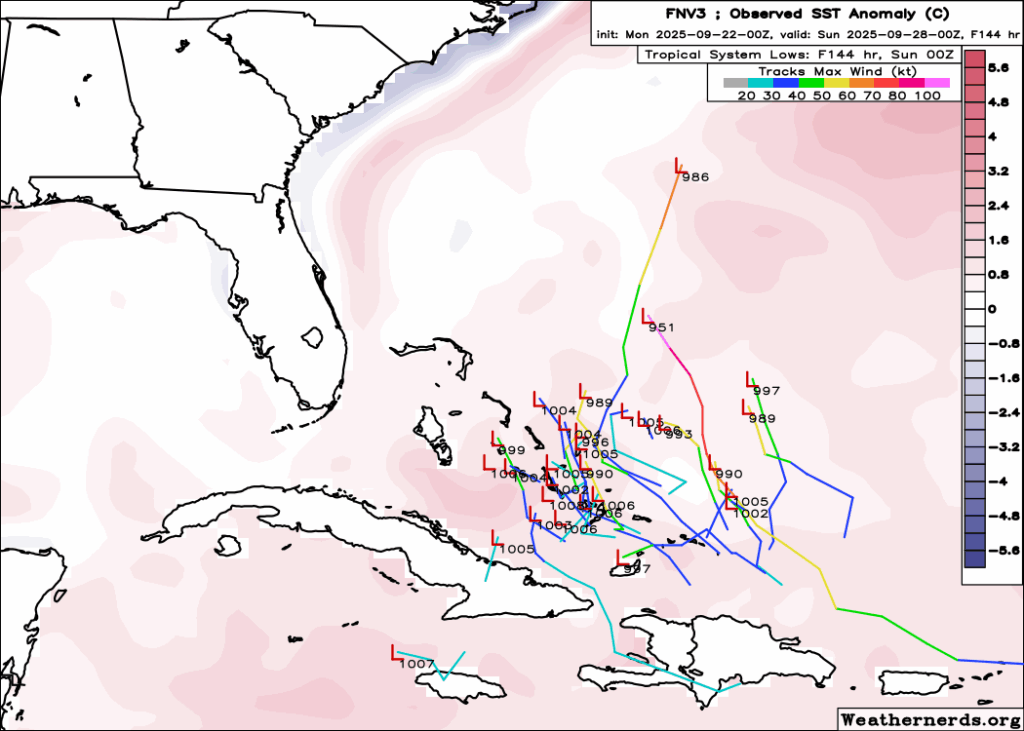
Notably, about the same percentage of European ensemble members are doing the same thing here. So there is growing model support for something in this area in about 6 days. What it looks like, what it is, what its impacts will be? We don’t know yet. But interests in the Bahamas and Turks and Caicos Islands should be monitoring the progression of the NHC Disturbance 2 over the coming days. For the U.S. Southeast? It’s too soon to say much about this. Folks in Florida up through the Carolinas should continue to monitor but understand that there is a very high amount of uncertainty with this wave. Confidence in Disturbance 1 is a bit higher both in track and in details right now. Confidence in this Disturbance 2 would be classified as low to lower than average. More to come.
